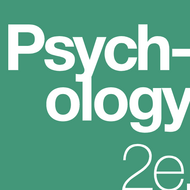
(View Complete Item Description)
Here is the link to the new Passion-Driven Statistics e-book!
Github book https://bit.ly/PDSe-book
pdf version https://bit.ly/PDSpdf
Passion-Driven Statistics is an NSF-funded, multidisciplinary, project-based curriculum that supports students in conducting data-driven research, asking original questions, and communicating methods and results using the language of statistics. The curriculum supports students to work with existing data covering psychology, health, earth science, government, business, education, biology, ecology and more. From existing data, students are able to pose questions of personal interest and then use statistical software (e.g. SAS, R, Python, Stata, SPSS) to answer them. The e-book is presented in pdf format for ease of use across platforms.
http://bit.ly/EditPDSe-book
For more information, contact Lisa Dierker, ldierker@wesleyan.edu or check out the Passion-Driven Statistics website at https://passiondrivenstatistics.com/
Material Type:
Activity/Lab,
Full Course,
Homework/Assignment,
Lesson Plan,
Textbook
Authors:
Kristin Flaming,
Lisa Dierker




















